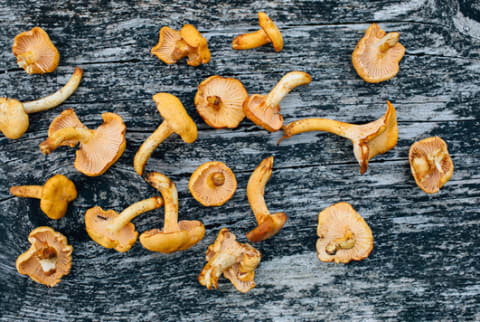Advertisement


This piece was co-authored with Lara Zakaria.
You’ve likely heard a lot about vitamin D lately. And for good reason: Research around the role of vitamin D and its link to health has grown exponentially over the past two decades. While it was once most often associated with bone health, we now also know that this fabulous molecule might also play a key role in the prevention of many different conditions including autoimmune disease, heart disease, cancer, and diabetes, to name a few.
There are a few factors that increase one’s risk for vitamin D deficiency. Dietary deficiency, reduced sun exposure, or living above the 37th parallel are among the most significant factors. Other factors include ethnicity/skin color, obesity, poor food absorption, genetic factors, and chronic diseases like chronic kidney disease and inflammatory bowel disease.
As a result, it’s pretty common to supplement with vitamin D3, especially since few foods are high in the vitamin. But what if there were an alternative, natural way to boost your levels?
Enter the mighty sun-soaked mushroom.
How mushrooms can become a source of vitamin D:
Across cultures, mushrooms have long been viewed as a powerful superfood. They have immune-boosting properties and even some antimicrobial effects. They are full of phytonutrient compounds like polysaccharide-glucans, sterols, and lectins, as well as fiber, protein, and nutrients like selenium, potassium, magnesium, calcium, riboflavin, folate, and niacin. And ... drum roll ... also vitamin D.
That’s right, mushrooms make vitamin D from the sun, just like we do. Isn’t that cool? What’s neat is that UV exposure is what really makes this work, just like it does in our bodies.
In fact, exposing mushrooms to sunlight for only a few hours dramatically increases the levels of vitamin D they contain. The amount of vitamin D does depend on the type of mushroom, as well as the length of sun exposure. But even just 5 to 10 minutes of sun exposure can have a significant effect.
So if you’re the type of person who prefers to get your nutrients from food, you may be able to eat UV light-exposed mushrooms as a substitute for, or complement to, daily supplementation.
However, there are a few points to know before you dive in:
What form of vitamin D do sun-exposed mushrooms contain?
The form of vitamin D found in mushrooms is D2. However, while we generally opt to supplement with D3, most of us usually do a good job activating D2 found in plant food. A A study conducted at Boston University Medical Center concluded that ingestion of mushrooms with 2,000 IU of vitamin D2 was as effective as 2,000 IU of both D2 or D3 in supplement form and therefore can increase blood levels of vitamin D to ideal range.
Does this mean you don’t need a vitamin D supplement?
It depends. We recommend regular blood tests to check your vitamin D levels and to see if you’re able to maintain a healthy vitamin D status through food alone. We often see patients who, despite high intake of vitamin D, still have inadequate levels circulating in their body.
Your need for vitamin D is highly personalized. If you have any issues with nutrient or fat absorption or have a higher utilization rate for vitamin D, you may have a harder time restoring or maintaining vitamin D levels with food sources alone. It’s a good idea to work with a practitioner who can monitor your levels and offer repletion strategies if necessary. They can also identify and correct any absorption or digestion issue that might be contributing to poor nutrient absorption in general.
Is it safe to prepare sun-exposed mushrooms?
Raw mushrooms contain a naturally occurring chemical called agaritine. Excessive consumption of this compound has been linked to increased risk of cancer. However, storage and cooking have varying levels of impact. Cooking mushrooms (especially boiling or frying), refrigeration, or acidic conditions (such as during fermentation) reduce agaritine levels by 25 to 75 percent.
The bottom line: The benefits of consuming mushrooms prepared properly are considered to outweigh any potential risk.
How to make your own vitamin D-rich mushrooms:
If you have some sun-exposed mushrooms ready to go, a simple slice-and-sauté will certainly work.
But if you want to try something a little more adventurous, try out our fermented mushroom recipe. It makes a delicious addition to eggs, salad, or even just a simple snack.
Fermented foods have tremendous health benefits, providing us with good bacteria that improves digestion and immunity, and may even act therapeutically in conditions like obesity and depression. We also know that fermentation and refrigeration can reduce agmatine. Since cooking is not involved, we’re increasing the amount of vitamin D that’s retained.
Lactofermented Vitamin D Mushrooms
Ingredients:
- 8 to 16 ounces mushrooms (you can use a variety or a single favorite kind)
- ¼ teaspoon sauerkraut juice, or culture starter
- Fresh thyme (few sprigs to taste)
- Fresh marjoram (few sprigs to taste)
- 2 to 3 cloves garlic, smashed
- Salt brine (1 tablespoon salt per 1 quart of water)
Directions
1. Lay your mushrooms out on a flat cookie sheet and leave under sunlight for at least an hour but up to six hours for maximum vitamin D production.
2. Place all the ingredients (except brine) in a quart-size Mason jar, squeezing in as much as possible.
3. Add enough brine to cover, but be sure to leave about 1 inch of space at the top.
4. Mushrooms like to float, so weigh them down. You can use a smaller jar or a cup inside your Mason jar.
5. Allow to sit on your counter for 3 to 5 days.
6. After 5 days, move into the refrigerator. Your vitamin D powerhouse fermented mushrooms are ready to enjoy!